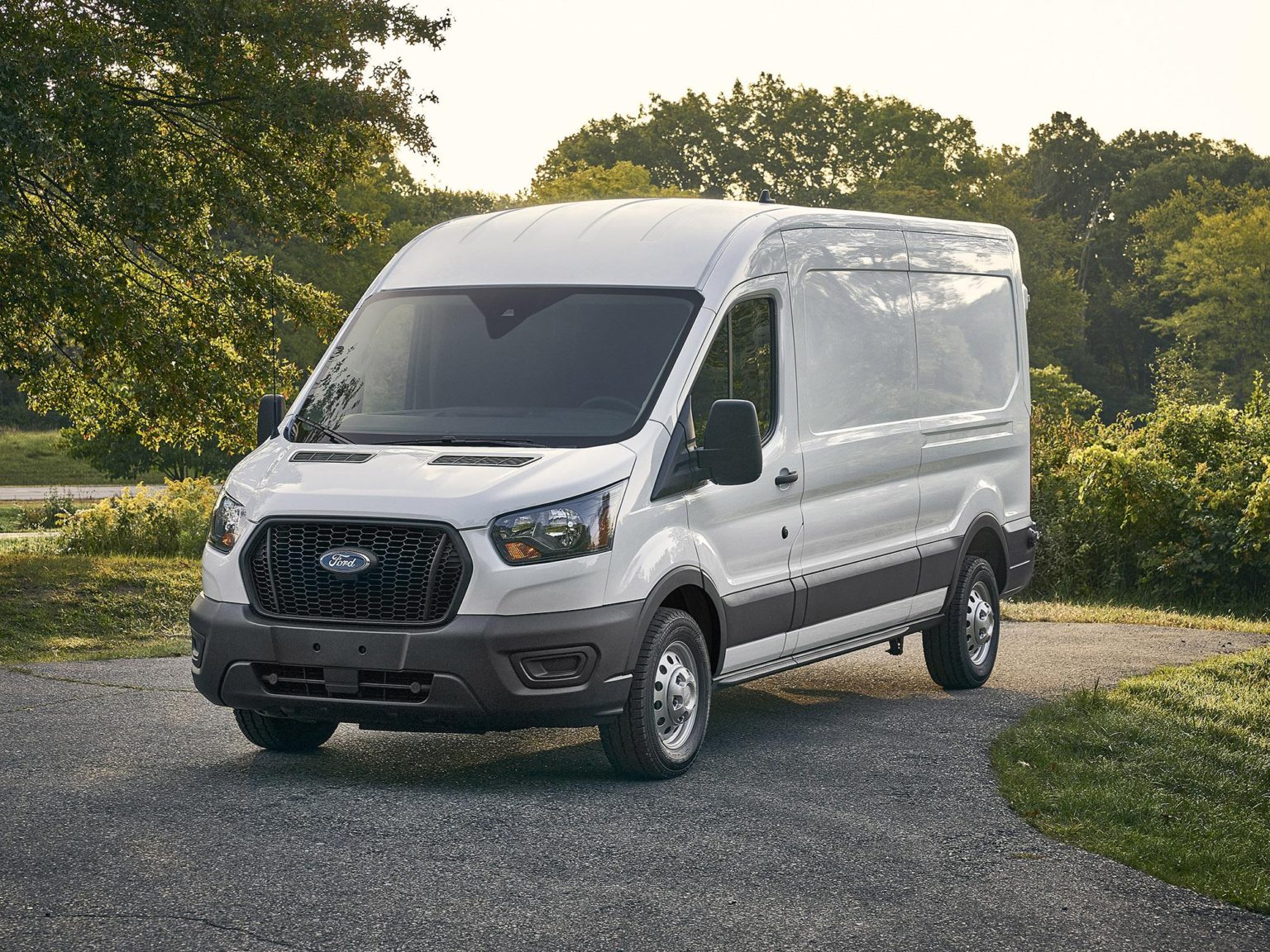Amazon delivery drivers are all over the map. Chances are if you’re out and about you’ll pass at least one during the day if you live in a major metropolitan area or its suburbs – their fleet was made up of at least 30,000 in December 2019 and has expanded since then. Most of that driving is done behind the wheel of three different vans: Ram ProMaster, Mercedes-Benz Sprinter, and Ford Transit.
The vast majority of Americans has never driven any of those. When they think of the word van, their minds inevitably go to the Honda Odyssey, Chrysler Pacifica, and Toyota Sienna before it gets anywhere close to those models. In the U.S., the ProMaster, Sprinter, and Transit are primarily designated for hauling tools and equipment to and from jobs, moving students to and from after school activities, and making deliveries.
The Transit has gotten some new package options for the 2021 model year.Photo courtesy of Ford Motor Company
In an economy that has gone increasingly toward online shopping, Amazon vans are the ants of the roadway. They start in storage lots each day (nowadays that’s often unused off-site airport parking lots or at empty office buildings) then spend their days making their way across a small subsection of your town.
That to-and-from is done in surprising comfort if they’re in a Ford Transit. Ford recently lent a Transit for review and the there was one major takeaway – it’s not a bad place to spend your day (unless there’s a driving rain storm – more on that later).
The steel unibody of the Transit stretches to a maximum 148-inch wheelbase. That’s about the same as your average Ford Super Duty. What is essentially a large box on wheels with a pinched front end is powered by either a 3.5-liter V6 or a turbocharged 3.5-liter V6. The tester had the turbo, which delivered 310 horsepower and 400 pound-feet of torque, which was brilliant off the line when the cargo area wasn’t brimming with packages. It got up to speed better than some of the small SUVs regularly making their way through the test drive fleet.
The rear portion of the Transit is printed for aftermarket rack installation – something that Amazon’s fleet is equipped with.Photo courtesy of Ford Motor Company
Driving the Transit is surprisingly easy. There are pickups that are harder to park. Navigating a crowded parking lot and busy city street in the Transit was easy thanks to its connected and accurate steering, which makes it move more like a Fusion than an F-150, and plenty of forward visibility and large mirrors. The Transit just barely fits into modern parking lot spaces, not unlike it’s heavy-duty truck counterparts.
It’s not particularly high-tech, but it doesn’t need to be. The infotainment screen is straight out of the modern Ford passenger car lineup, meaning it has plenty of connectivity options, and all its climate controls are straightforward in operation. Abundant small item storage makes up the bulk of the lower center console space.
The Transit is big on space. The rear three-quarters of an empty one is large enough to hold a socially distance dance party for a group of three-year olds, or a shift’s worth of Amazon packages. When empty, the body of the van is more like a tin can than a typical family hauler. A light rainfall is as pleasing as a drip, drop on a steel roof. A downpour becomes loud enough to require sound-deadening headphones – something not permitted in most states – to allow oneself to think.
The interior of the Transit is plenty spacious for one or two people.Photo courtesy of Ford Motor Company
For the 2021 model year, Ford has updated the Transit offerings to include recreational vehicle and parcel delivery option packages. For 2022, there are big changes ahead. That’s when the E-Transit is introduced, giving a new all-electric commercial option to companies. It will start under $45,000 and have a 126-mile range.
Ford instructed the E-Transit earlier this year and showed off similar styling to the current model, but with a fresh interior that brings high-tech components of its traditional passenger cars forward. Whether or not it will be as comfortable or easy to drive as the 2020 Transit has yet to be seen.
The E-Transit will likely be added to Amazon’s lineup in the coming years, along with Rivian’s customized electric van, which is currently being tested.








